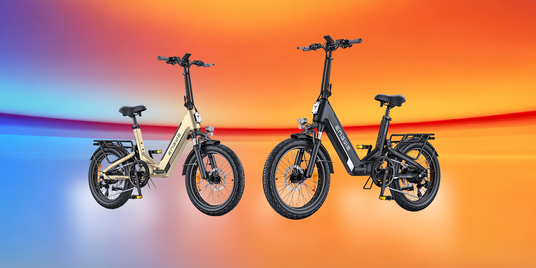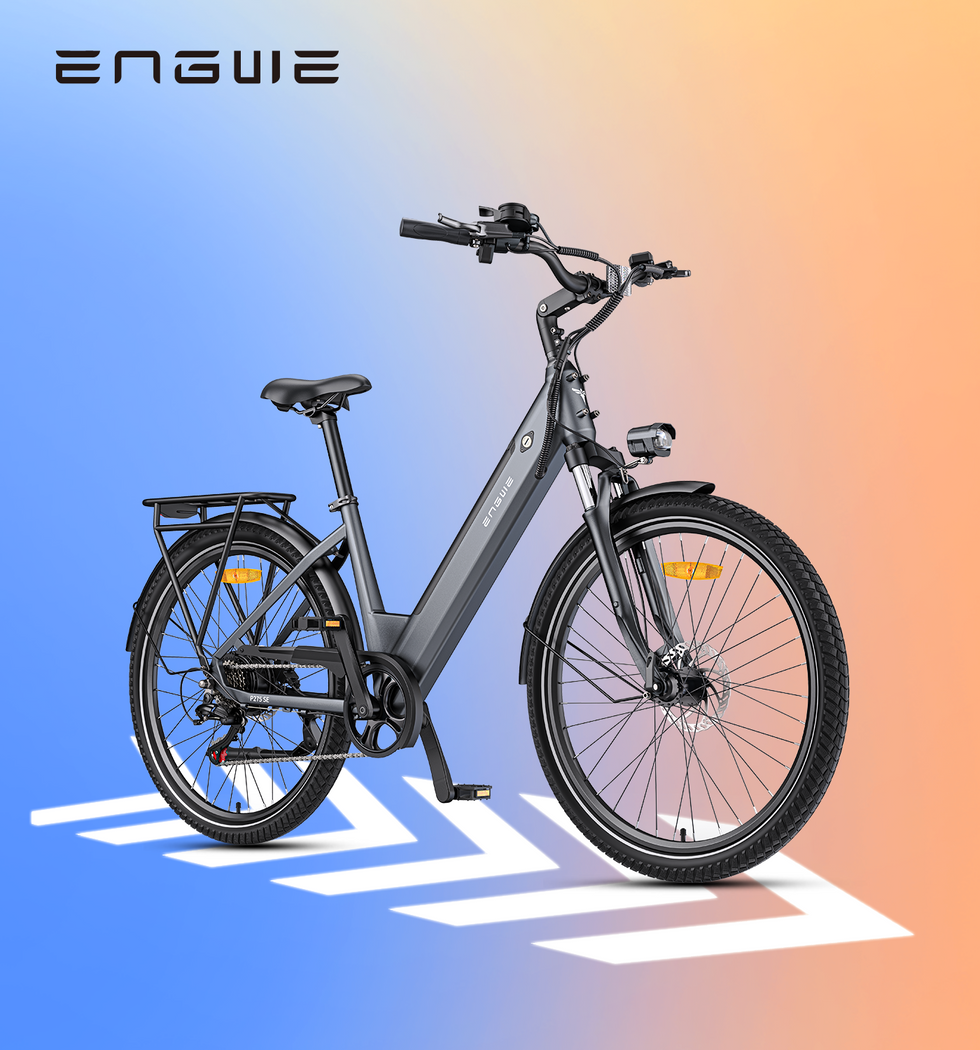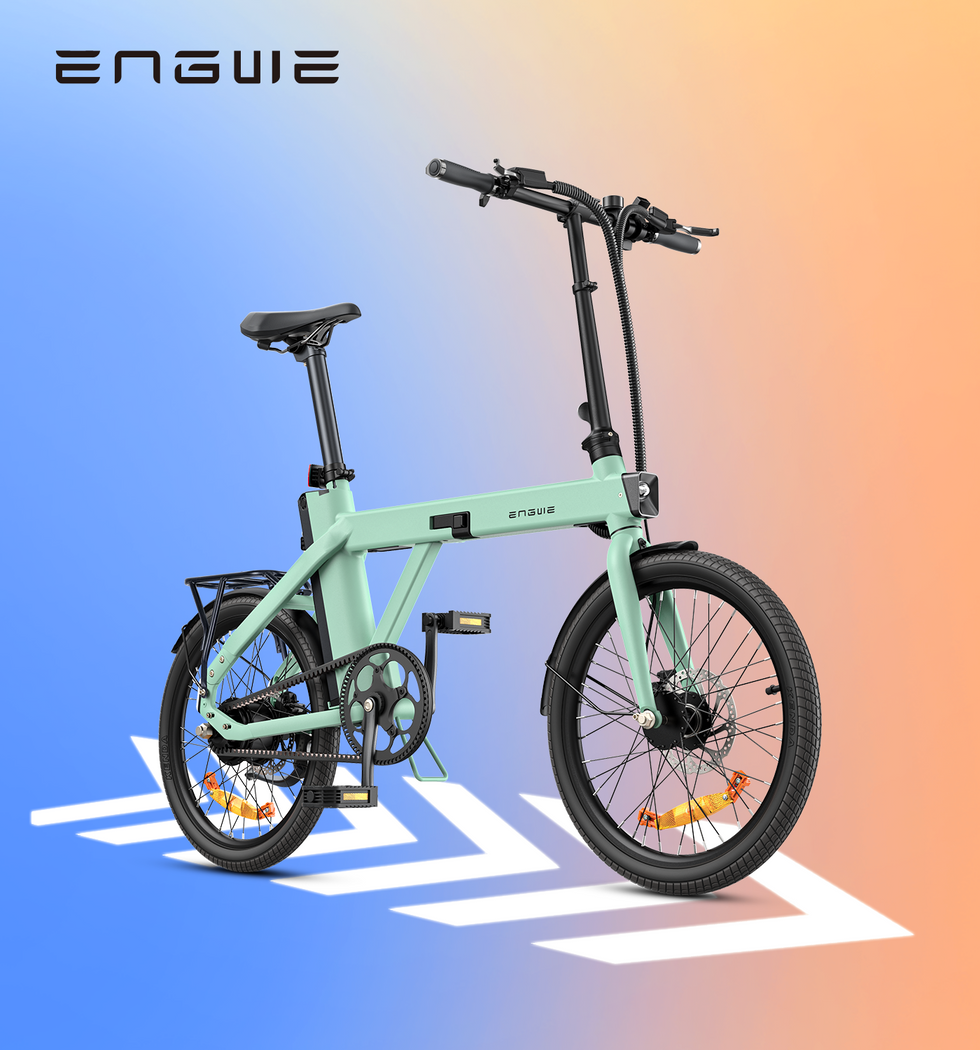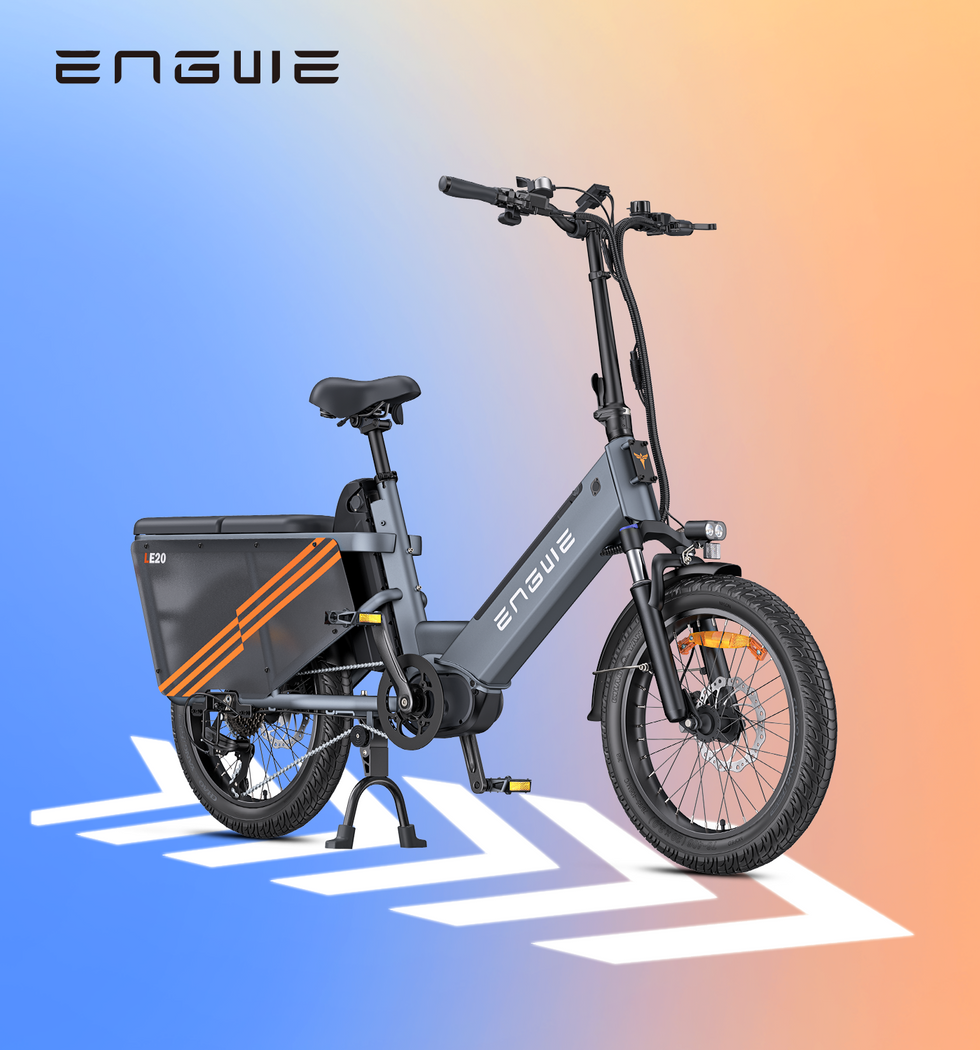You know what it’s like standing a few steps away from a trailhead, a sandy beach or one of those cobblestone Euro city lanes and thinking, man, do I wish my bike could do all of it. Or maybe you have no storage in a flat, or want to take your bike on holiday to the caravan, but a full-sized machine is impossible. This is specifically the problem the folding fat tyre electric bike industry has been created for. This isn’t just a bike with a motor; it’s freedom and convenience reimagined. This amalgam covers the top requirements of a modern rider: versatility, portability, and power. It’s for the weekend warrior, the smart city slicker and the holidaymaker who will not be bound by terrain or transit. In this guide, we’ll explore why this breed of electric bike is enjoying a meteoric rise in popularity, and how to select the one that will actually change how you experience the world.
The Go-Anywhere Appeal of Fat Tyres
It is the fat tyres we need to examine to see where the attraction lies. These chunky tyres – generally 4-inches in depth – are what equip this bike to master all terrain. Fat tyres are meant to run at a far lower psi than road or regular mountain bike tyres. This gives it the ability to distribute itself out over a larger contact patch with the ground, so it more or less floats on top of soft stuff like sand, snow, or mud, as opposed to digging in. The first time I took it out on a gravel path, the ride was remarkable. Where a regular bike would be skittering and sliding, the fat tyres gave an air of unstoppability. This confidence is transferred straight to the rider. You stop sweating all the little bumps in the road and start smelling the roses. The bouncy effect is also its own form of suspension, soaking up hits from pits or tree roots, leading to an oxymoronically plush, even suspension-free ride.

Unlocking Ultimate Portability: The Folding Factor
The folding of the magic formula is its second component. The biggest barrier to ownership for many prospective cyclists? Space. A regular bicycle requires a substantial amount of space in a hallway, shed or garage. A folding electric bike, however, shrinks down into a small bundle in less than a minute. This is a game-changer. It means you can keep it in a cupboard at home, under your desk at work, or in the boot of your car. For travel lovers, it is the ultimate companion for a caravan or camper van and the ideal for enabling you to travel, park up, and explore the surroundings without the need for a bulky bike rack. The process is straightforward: just a couple of sturdy, quick-release latches on the main frame and handlebars. Today’s engineering means that when locked in position, these frames are very strong and rigid, and there's no longer any need for concerns about the longevity of folding designs. That portability isn’t just a gimmick—it’s a feature that fits cycling effortlessly into a contemporary, on-the-go lifestyle.
Behind the Handlebars: The Ride Experience
And now we’ve come to the experience of actually riding one. The motor and those fat tyres make a ride like no other. Once you begin pedalling, a torque sensor smartly picks up on your input and the electric motor delivers a smooth, noiseless kick. You don’t feel like you’re on a motorbike; you feel ‘Holy crap, I have peloton legs.’ Formidable hills are levelled like never before. You select the level of help you want, from a light push to a powerful assist, so you can adjust the ride to the profile of your own fitness or how late you are for that appointment. You’re also kept stable by the fat tyres – whether you’re negotiating bustling city traffic or pottering along a rough country lane. The perfect balance of effort-saving power and next-level comfort, these amazing all-rounder electric bikes put the fun back into active cycling while taking the edge off hills and opening the open road like never before.

Choosing Your Bike: Our Top Pick and Final Checks
Our Favourite Pick: ENGWE EP-2 Boost
If you want to choose one single model that stands out across all categories, you may want to choose our top pick, the ENGWE EP-2 Boost. This e-bike is a design lesson that really holds the power, practicality and performance like no other! Its beating heart is the road-legal 250 W brushless motor. However, the shining star is the smart torque sensor. This tech makes for an incredibly natural and responsive ride — you get power where you need it and it feels completely intuitive when you pedal. Down hills, and for steep inclines, the sizeable Boost button delivers a hearty 55 Nm of torque for an instant turbo shot of power. The bike's range is excellent with an extra-large 48V 13Ah battery that offers the ability to travel up to 120 km on assist (you'll never suffer from range anxiety on a day trip again). Safety is the highest priority with the powerful 180mm front and rear disc brakes providing excellent stopping power. The super-wide 20 x 4.0 inch fat tyres are mounted on tempered aluminium alloy rims, giving you durability and control when you are touring off-road with the Krusade. The EP-2 Boost also includes a clear LCD with 6 levels of pedal assist, a silky smooth Shimano 7-speed gear set, a comfortable front suspension fork, and a robust rear rack. Its small folding form means you can take it everywhere, and the portable battery will get you further than you thought possible.

Key Things to Know Before You Buy
But before you decide, there are several practicalities to weigh. The first is weight. Folding fat tyre electric bikes are certainly a bit heavy, with the heartier frame, thicker, heavier wheels and tyres, as well as the battery pack and motor all contributing to the heft – around 30 kg. Thanks to their folding design, these bikes are easy to manage and you can simply store them when not in use. Be aware if you are lifting it and putting it in a car or taking it up a flight of stairs etc.
The second thing you want to consider is battery maintenance as it is the difference between long-term hassle-free use or otherwise. Here’s how to prolong the life of your battery: Store it, and charge it, in a dry place at room temperature, and don’t let it go completely empty for long stretches. Models with removable batteries, however, have a major convenience and security edge, in that you can pop the battery out to bring it indoors to charge.
Lastly, always check the local laws and rules. EAPC are restricted up to a 250 W motor and the assist must stop when the bike reaches 25 km/h (15.5 mph) in the UK and EU. Please always ride safely and be sure to comply with the law for your area.
| User Problem/Question | Article Section Giving the Solution |
|---|---|
| I don’t know if this bike is right for me. What is it for? | Introduction: Describes what the bike is for and who it's aimed at. |
| Why are those big, fat tyres such a good thing? | The go-anywhere appeal of Fat Tyres: Explains the pros for various terrains and comfort. |
| I have no space for a bike. And is a folding one really useful? | Unlocking Ultimate Portability: The Folding Factor: Highlights Storage and Transportation Advantages. |
| What is it like to ride, really? Is it fun? | Behind the Handlebars: The Ride Experience Explains the feel of the ride, including power and stability. |
| There are so many options. Which Model Should I Go with? | Our Favourite Pick: ENGWE EP-2 Boost: Offers a concise, clear product recommendation. |
| What are the real trade-offs or things I should be aware of before making a purchase? | Key Things to Know Before You Buy: Includes weight, battery care and legality. |
Frequently Asked Questions
1. What’s the true extent of range that I can achieve on a single charge?
There are many factors that affect the range of a folding fat tyre electric bike: what level of pedal assist (PAS) you are using, the terrain, the weight of the rider and even the tyre pressure. Factories commonly state a best-case range, such as the 120 km of the ENGWE EP-2 Boost, usually achieved with the lowest level of assistance on flat ground. Let's say mixed-use along varying help levels and occasional hills would be topping out around 60–90 km. It’s this idea of not thinking of it as a fixed value, but thinking more about a range. During a bicycle commute through city streets, you would likely only need to charge the battery once a week, while out in the open country a long adventure might consume the bulk of the battery in a day.
2. Are they hard to ride up hills?
Quite the opposite. This is where an electric bike really starts to make a difference. The motor is engineered to deliver torque, a buzzword for the rotational force that assists you on the climbs. When you’ve got 55 Nm of torque to play with and a dedicated Boost button, hill climbs become absurdly achievable. In place of grinding up the hill out of the saddle with nothing left at the top, you switch the assistance up a bit, pedal at 80% effort, and let the motor do the hard work. It turns mountains into molehills and pathways where they weren’t before.
3. Are folding fat tyre electric bikes heavy and difficult to carry?
We have to be realistic about weight. They are indeed heavier than a regular bike, 28 to 35 kg! All the elements that make up the battery, the motor, the sturdy frame, and the wide wheels combine. But the design tackles this problem as well. The folding structure enables you to hold it in a smaller, less onerous form. When folded down, you can wheel it, and it is much easier to lift a folded block into a car boot than to sling a full-sized bike in there. The burden of the weight, in this case, is the trade-off for the astounding toughness, strength and off-road durability that you get back in return; it's well worthwhile.
4. Can you use them on UK roads and cycle paths?
Yes, as long as they comply with the 'EAPC' (Electrically Assisted Pedal Cycles) regulations. The main rules for the UK are: the cycle must be equipped with pedals by which it can be propelled, the motor should have a maximum continuous power output of 250 W, and the electrical assistance should cut out at a speed of 25 km/h (15.5 mph). You must be 14 to ride one, and you need no licence, tax or insurance. Compliant cycles like the EU-legal EP-2 Boost can be ridden wherever a regular bicycle is permitted, on the road and cycle paths.
5. How can I reduce the likelihood my e-bike will be stolen?
Security seems to be a real concern with how expensive these bikes are. A multi-layered approach is best. First, invest in a good-quality D-lock, or a heavy-duty chain, and secure it to the frame and an immovable object. Second, make the most of removable batteries. The battery is one of the priciest parts, and a bike without one is markedly less appealing to thieves. Just unsnap the battery and when you park in a public spot for a longer time, take the battery with you. Lastly, write down your bike’s serial number and register it, and consider a GPS tracker for additional peace of mind.
Enjoy the freedom to go anywhere your heart desires.



